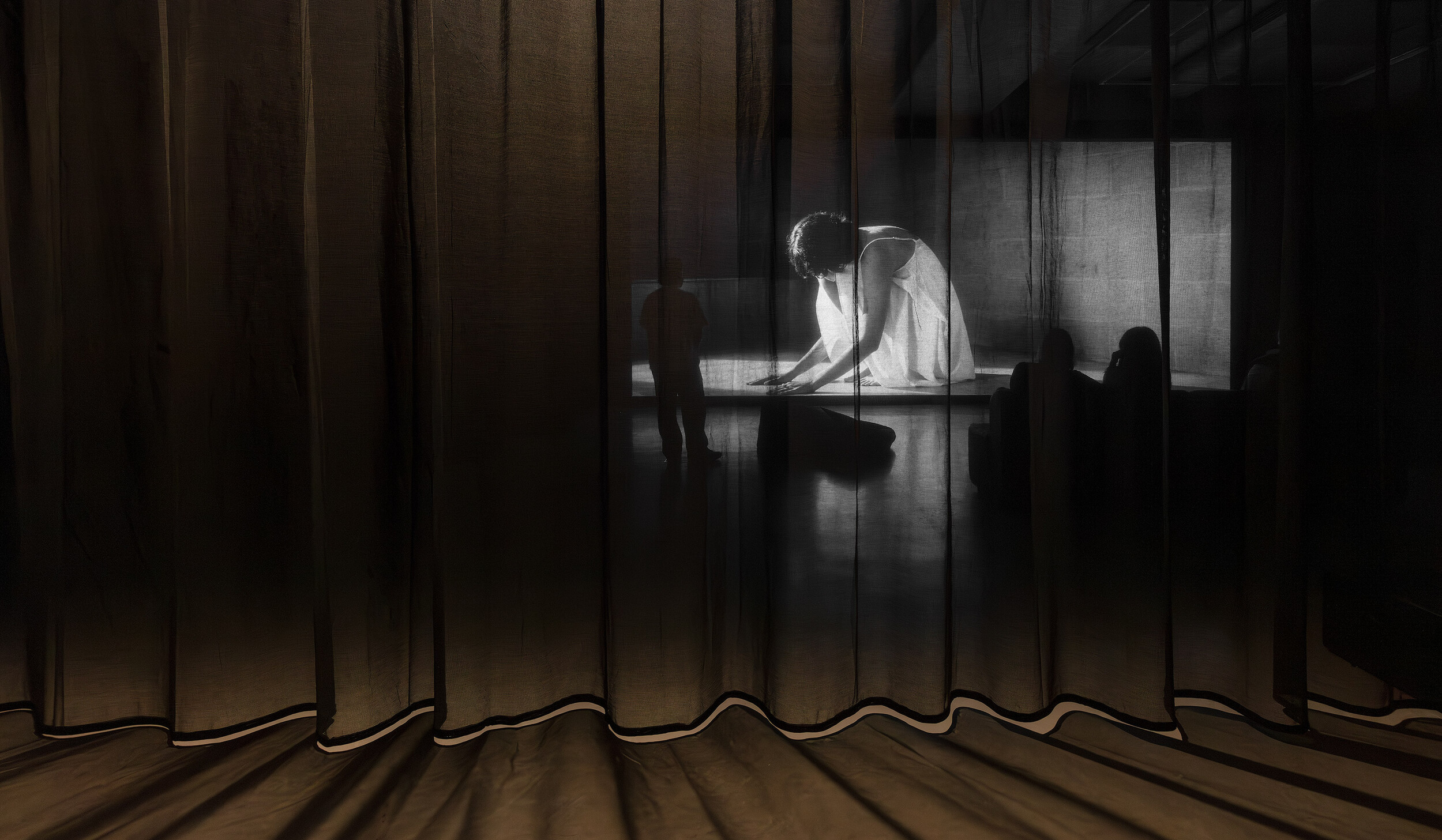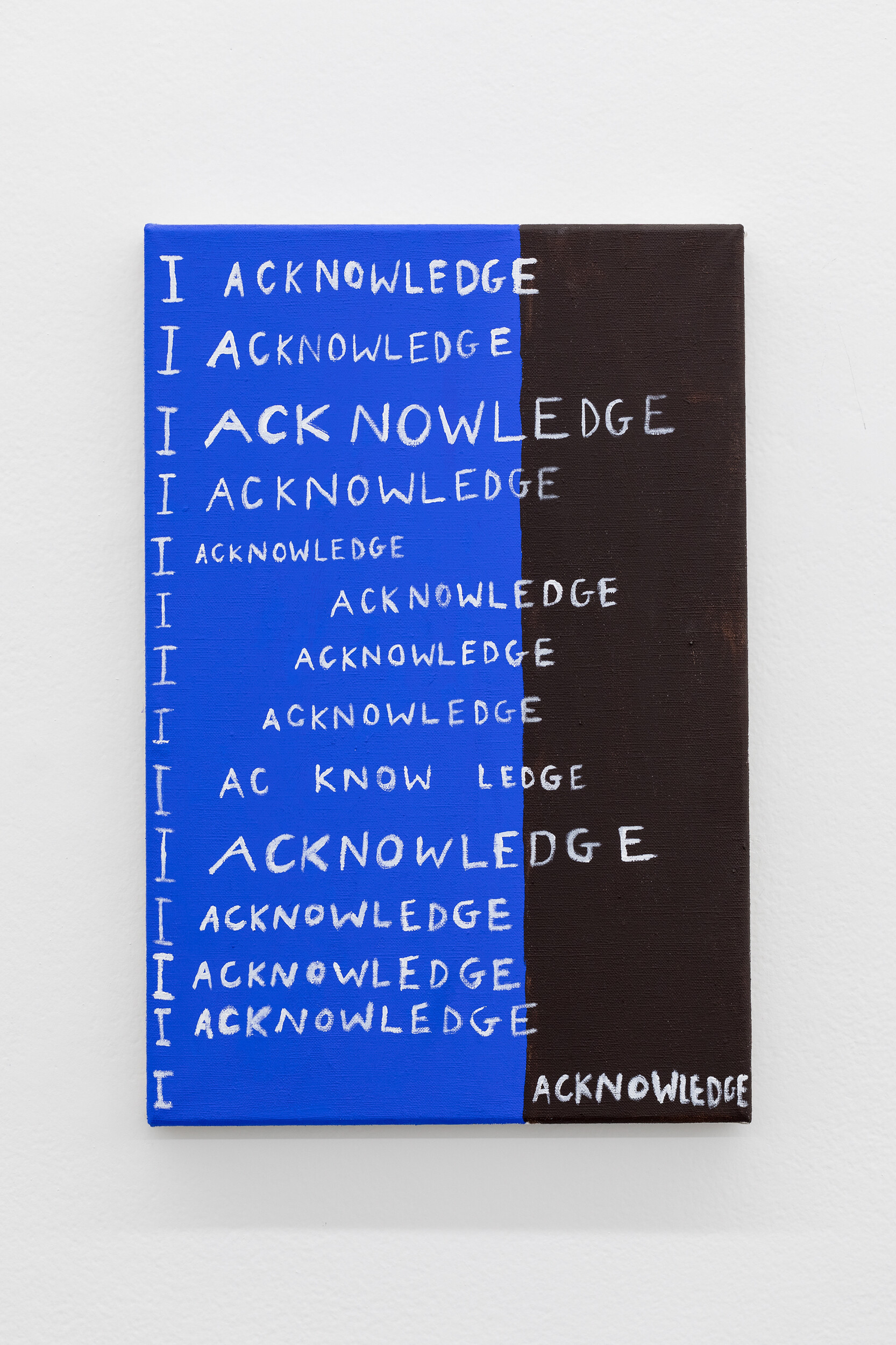Installation view of French Impressionism from the Museum of Fine Arts, Boston on display from 6 June to 5 October, at NGV International, Melbourne. Photo: Sean Fennessy
French Impressionism from the Museum of Fine Arts, Boston
Paris Lettau
The exhibition begins not with a painting but with a sculpture: a second-century Roman Aphrodite standing in quiet authority at the gallery threshold before a succession of Doric columns, posed as the Venus de Milo of the Louvre. She is a 1929 Felton Bequest acquisition, a fixture of the Lindsay Bernard Hall–era antiquities collecting, but here recontextualised to anchor Impressionism in a long, seductive continuum of timeless beauty. Christoph Willibald Gluck’s ancien régime–era opera Orfeo ed Euridice drifts across the atrium. It’s drawing-room music arranged for ambience rather than drama— not the raucous Impressionism of the Salon des Refusés, but one domesticated as décor.
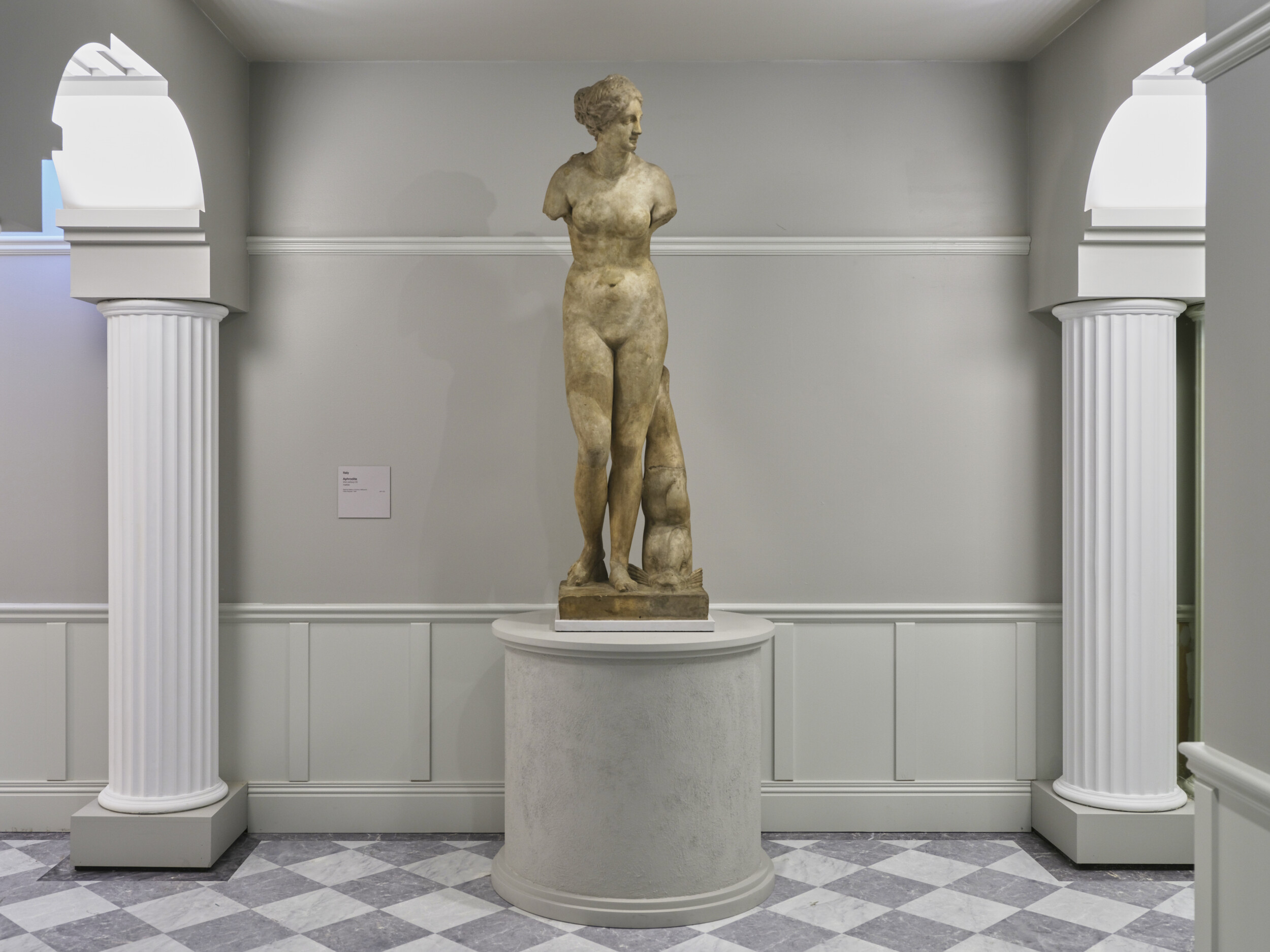
Installation view of French Impressionism from the Museum of Fine Arts, Boston on display from 6 June to 5 October, at NGV International, Melbourne. Photo: Sean Fennessy
Restaged after its pandemic-aborted 2021 run, French Impressionism from the Museum of Fine Arts, Boston returns to the NGV with over one hundred works, mostly paintings and a few prints. Based on the wall texts, most appear to have entered the Boston collection between the 1920s and 1940s, though many were originally purchased decades earlier by private collectors in the first wave of Impressionist exports. It is, on the surface, a familiar survey: Monet’s grain stacks and water lilies, Renoir’s dancers, Degas’s ballet girls. But this is not a package of masterpieces. It is the product of an American collecting history, shaped in part by the iconic Parisian dealer Paul Durand-Ruel and realised through the philanthropy of Boston’s patrician elite, including notable women. These are pictures that entered the collection through a chain of family inheritances, charitable trusts, and civic gifts, reflecting Impressionism’s liberalism and globalism: independent, portable, and prized.
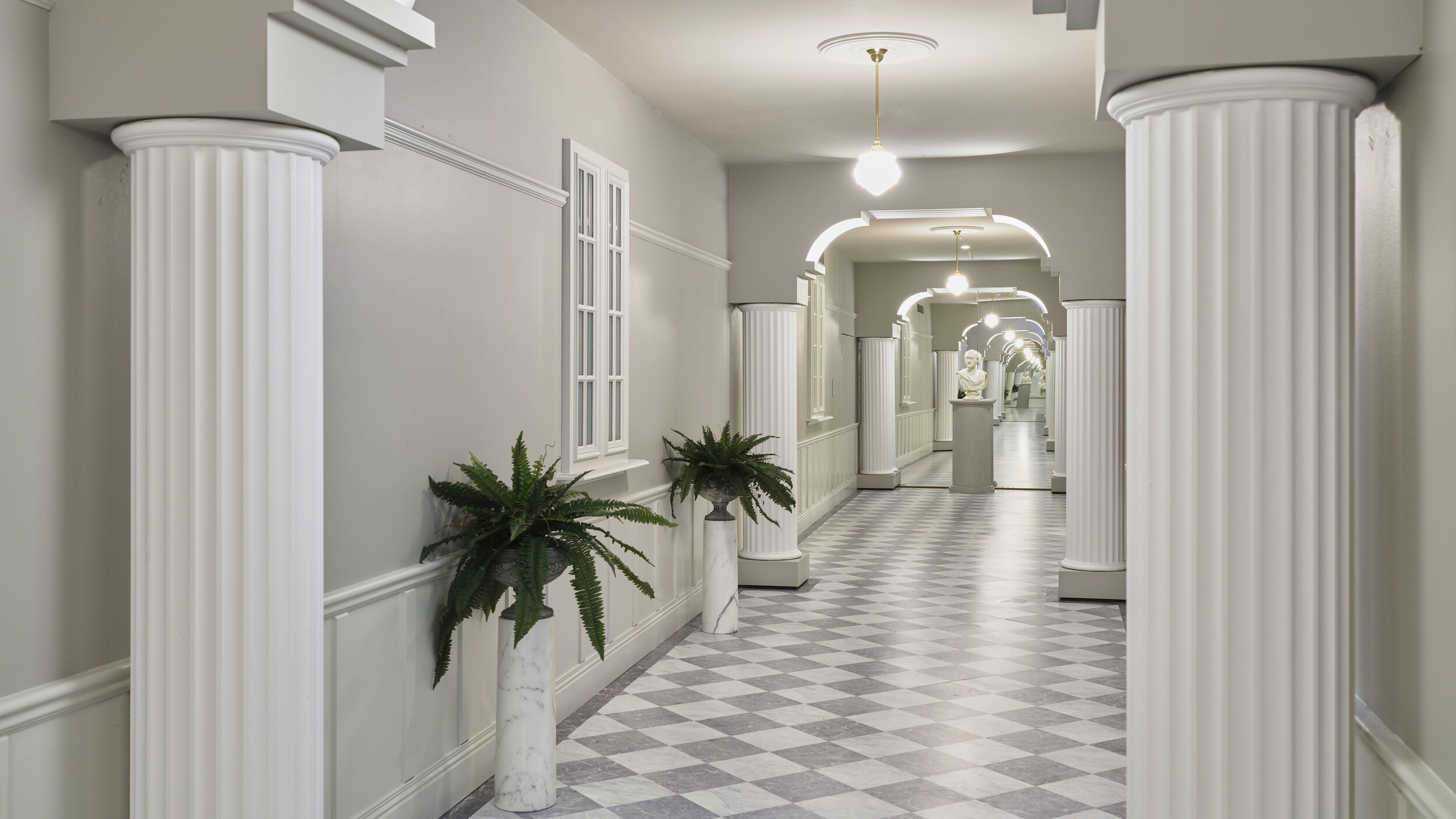
Installation view of French Impressionism from the Museum of Fine Arts, Boston on display from 6 June to 5 October, at NGV International, Melbourne. Photo: Sean Fennessy
We scarcely need reminding that French Impressionism sells. Its images have long been absorbed into the charming decoration of chocolate boxes and tea towels. That it returns again to the NGV is no surprise.
The first corridor of classical refinements opens onto a reconstructed nineteenth-century Bostonian salle, a rotunda lined with mock panelling, swagged drapes, faux parquet flooring, and plush carpet. Dwarfed by the interior in this room are just two small 1876 works by Monet and Renoir, painted the year of the second Impressionist exhibition, when these artists were self-consciously courting new markets. Renoir’s Woman with a Parasol and Small Child on a Sunlit Hillside is a pretty good painting, though a bit contrived: her dress unravels into a haze of brushstrokes, as if the artist is testing out new devices for dissolving image into atmosphere. Next to it, Monet’s Meadow with Poplars is a bit too poised informality, with a knowingness of someone already attuned to how his work might circulate. Even the haystacks in the distance seem to know they’ll have their moment (and they do in the final room).
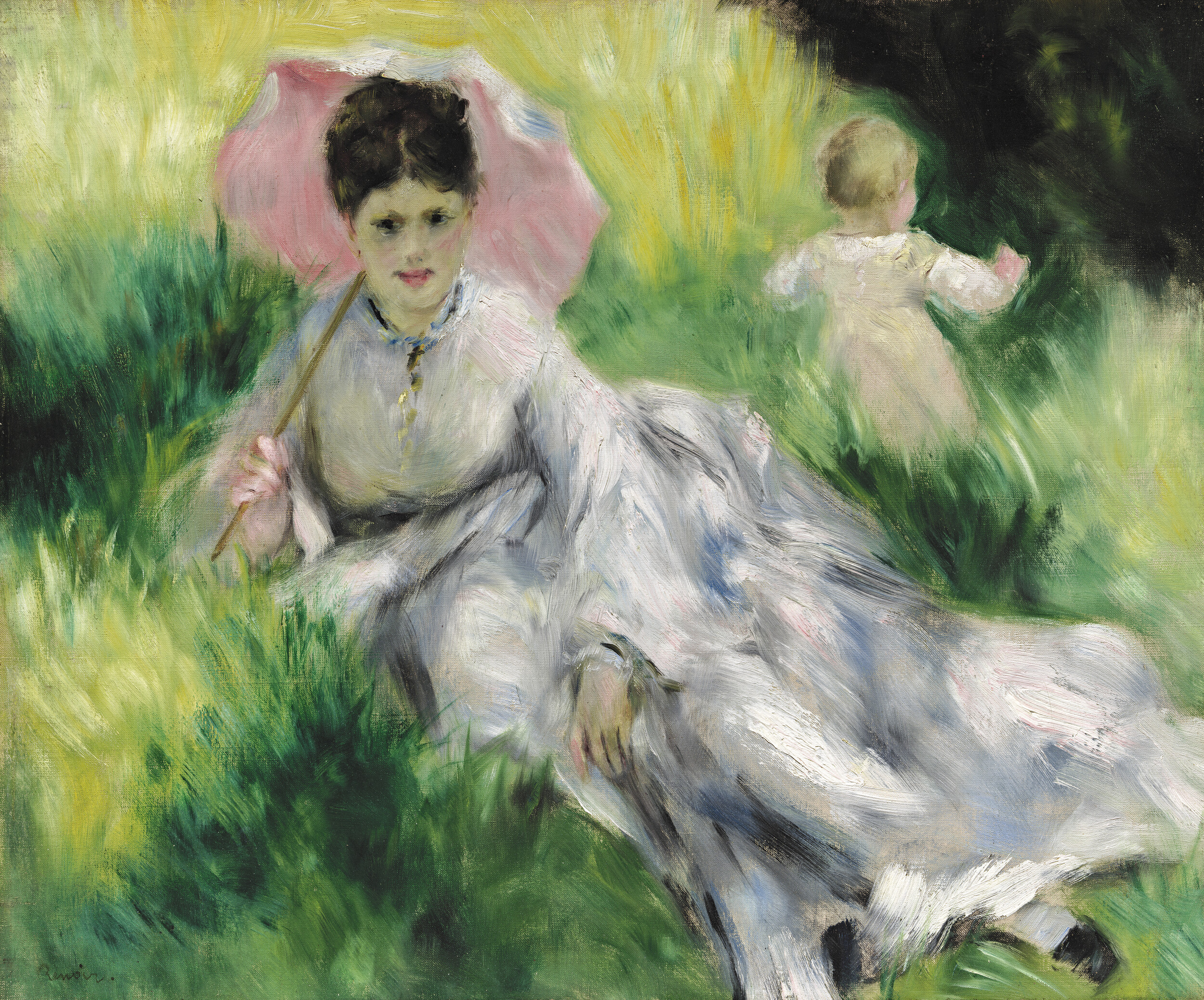
Pierre-Auguste Renoir French 1841–1919 Woman with a parasol and small child on a sunlit hillside c. 1874–76 oil on canvas 47.0 x 56.2 cm Museum of Fine Arts, Boston Bequest of John T. Spaulding Photography © Museum of Fine Arts, Boston. All Rights Reserved
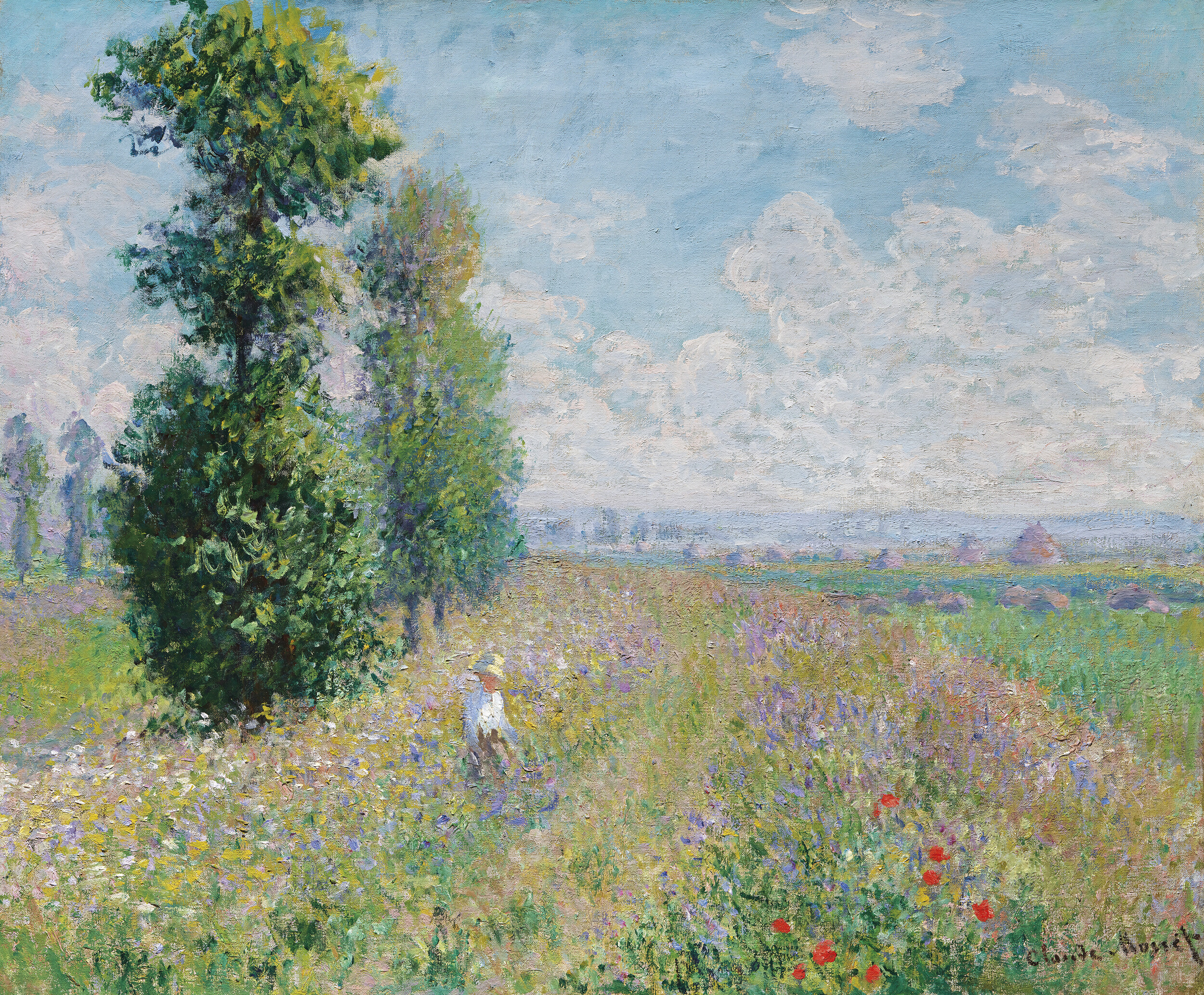
Claude Monet French 1840–1926 Meadow with poplars c. 1875 oil on canvas 54.6 x 65.4 cm Museum of Fine Arts, Boston Bequest of David P. Kimball in memory of his wife Clara Bertram Kimball Photography © Museum of Fine Arts, Boston. All Rights Reserved
Each room has a different scenography, but each shares a theatrical, Hollywood historicism—all big, beautiful rooms. After opening in the gilded-age’s Boston mise en scène, the immersive pastiche veers into the wooded atmospheres of Barbizon painting. “Before Impressionism” (the Barbizon room) is clad in dark green damask, with mahogany wainscoting, and tasselled drapery, evoking a Second Empire study. These landscape painters were, from the beginning, the old-timers said to inaugurate the plein-air tradition. Unlike the Impressionists, though, Rousseau’s Edge of the Woods is dense and airless, with a sodden track—more trodden than modern—receding into rusted foliage that swallows light and peasantry. These autumnal, depressing impressions are meant to prefigure a good, honest realism and humble truth-telling. Others, like Corot and Millet, exude more of the staged symbolism of the academy. One intriguing picture is Paul Huet’s The Forest of Compiègne (c. 1830), consisting of five forest vignettes on a single small canvas. Predating 1841’s wide availability of tubed paints it suggests a painter still tethered to the studio, grasping at the open air with rushed studies.
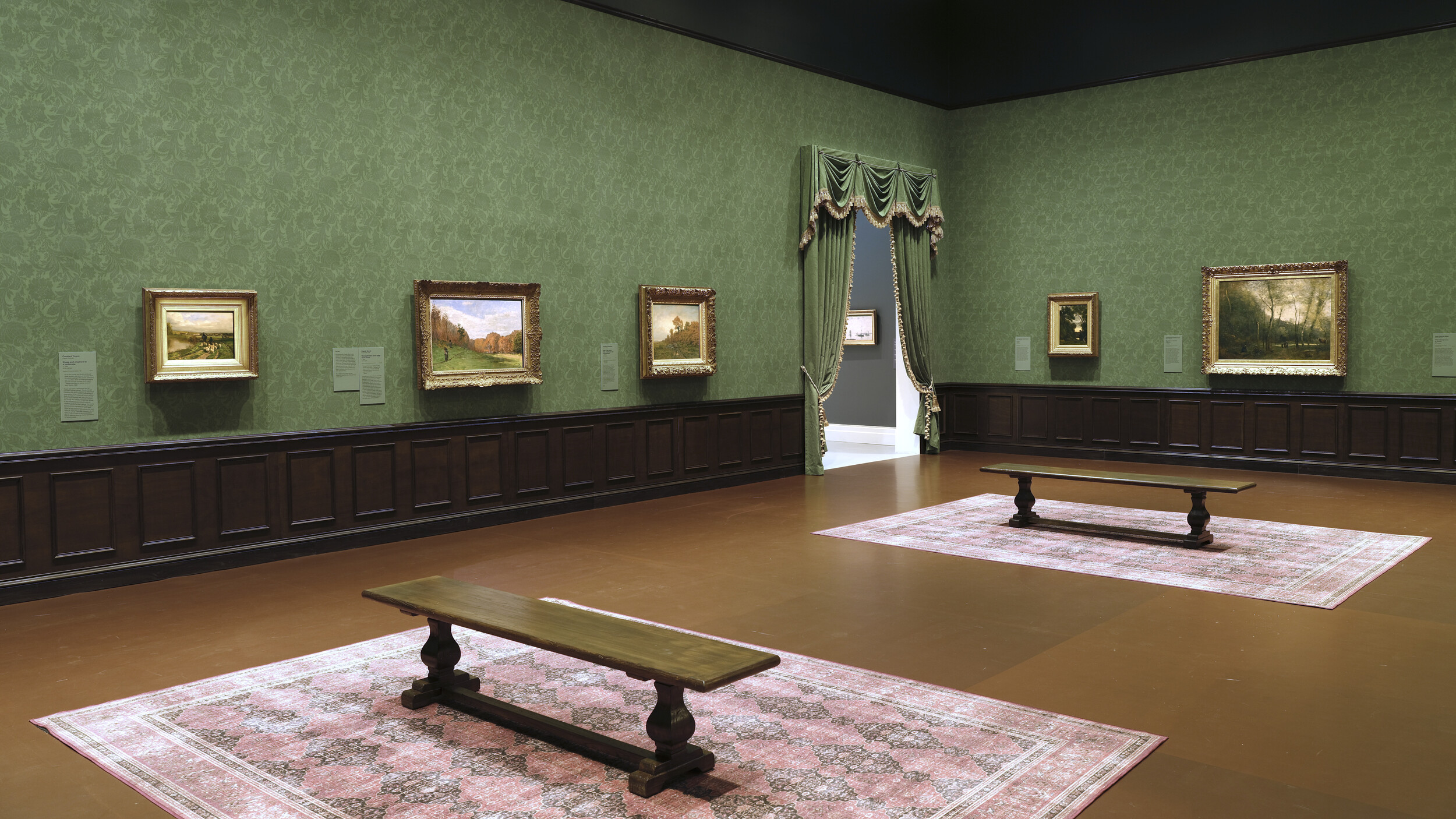
Installation view of French Impressionism from the Museum of Fine Arts, Boston on display from 6 June to 5 October, at NGV International, Melbourne. Photo: Sean Fennessy
Next is a room full of Boudins, Monet’s mentor and here interposed as another precursor, a Barbizon by the beach. Some of these are more composed than painterly, despite the small format. In Fashionable Figures on the Beach (1865), a chain of gazes links dogs to a girl, the girl to a couple, the couple out to sea, picturing the beach scene less as an impression than a tableau.
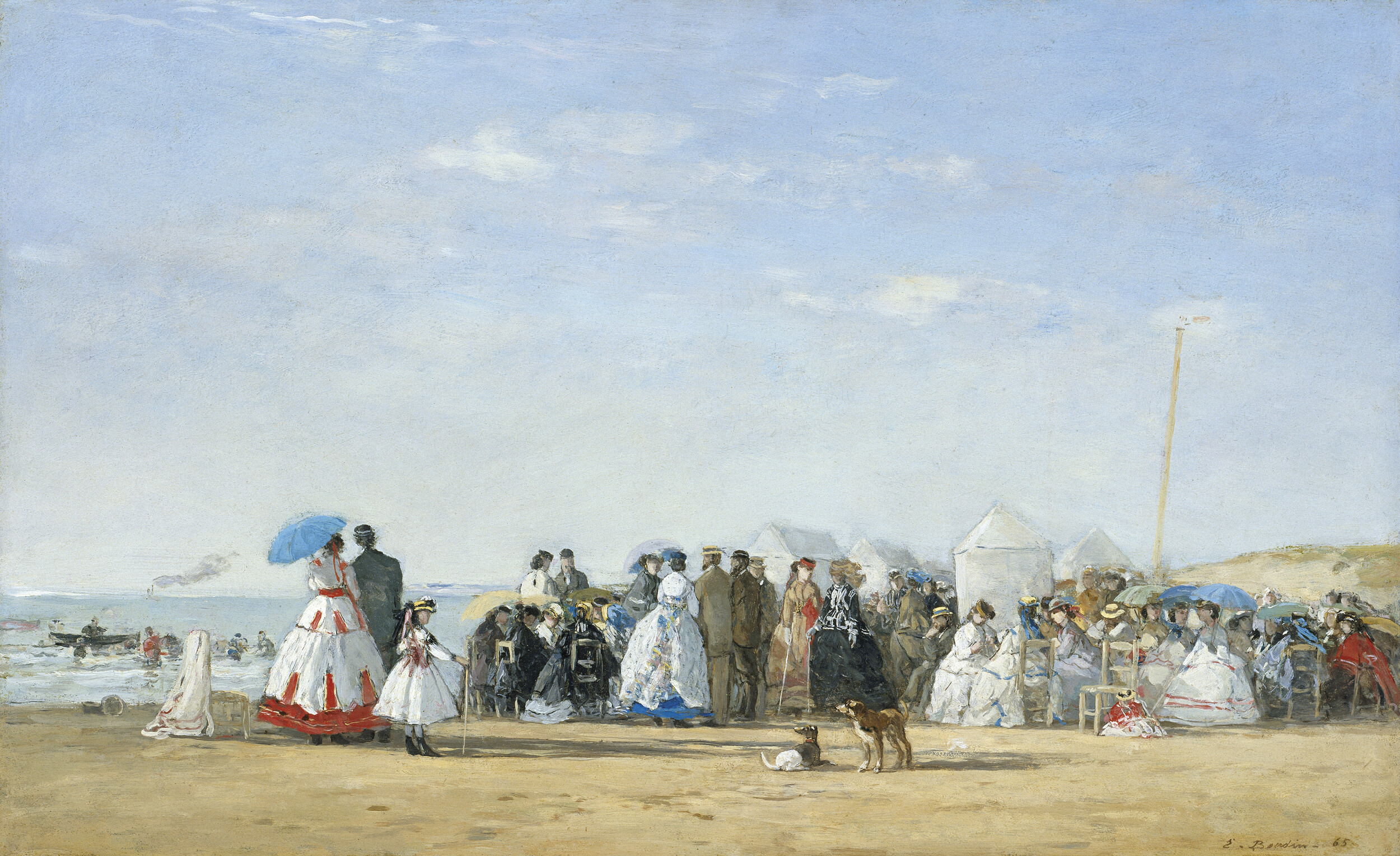
Eugène Louis Boudin French, 1824 - 1898 Fashionable figures on the beach, 1865 oil on panel 35.5 x 57.5 cm Museum of Fine Arts, Boston Gift of Mr. and Mrs. John J. Wilson Photography © Museum of Fine Arts, Boston. All Rights Reserved
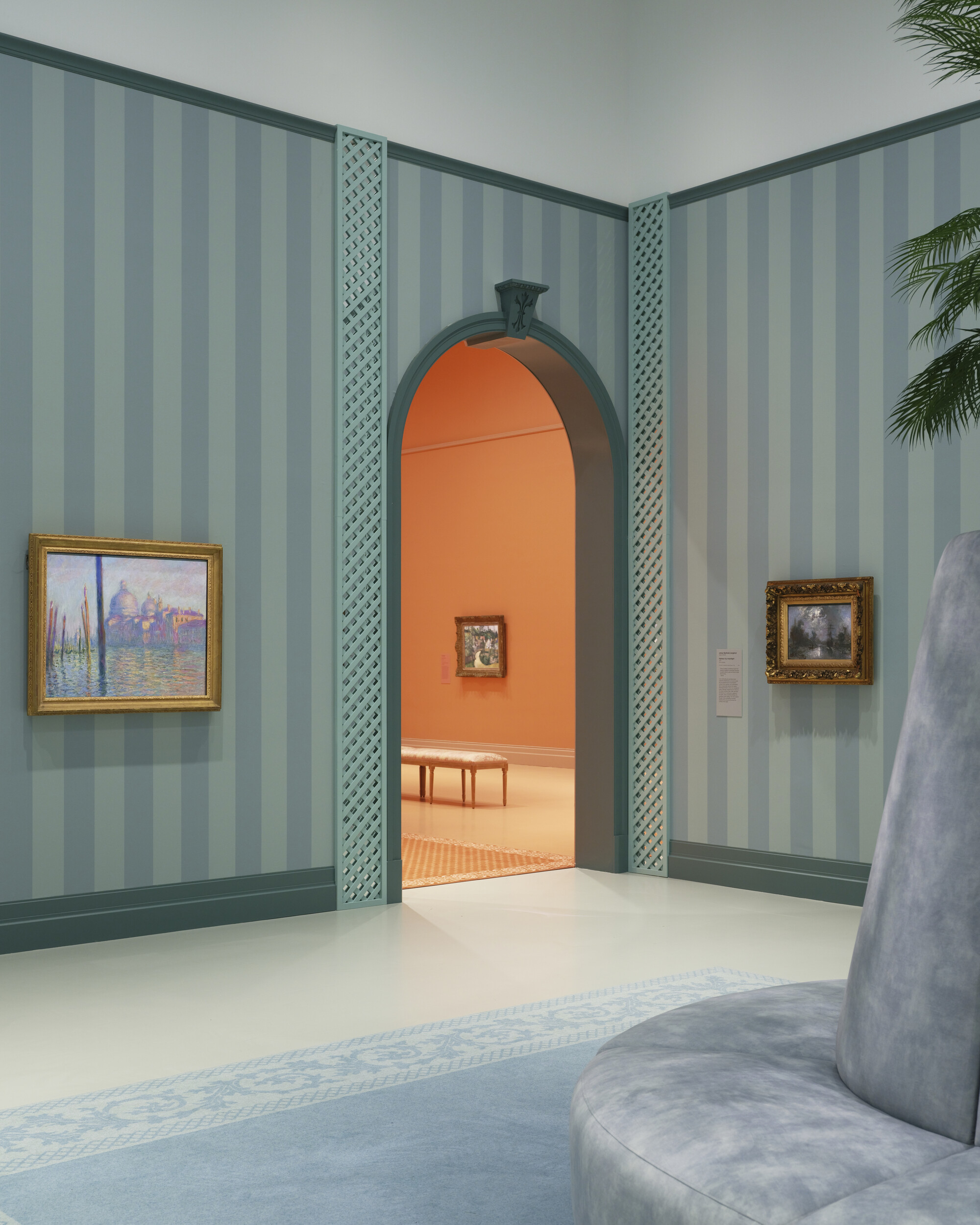
Moving on to the “Watery Surfaces” room is a breezier, gardenesque mood. Walls are painted in pale duck-egg stripes bordered with glittering lattice trim, like seaside pavilions or bathing huts. It’s light-filled and vaguely nautical. We capture this room by quoting the exquisite poet Stephane Mallarmé: “Claude Monet loves water.”
“Urban Realisms” goes dark and shadowy. It is clad in embossed wallpaper and faux gaslight sconces, evoking fin-de-siècle Parisian interiors with a Dickensian twist. Manet’s Street Singer (c. 1862) is the clear standout here. Then, before the final rooms of Monets and prints, is “Renoir and Experimentation,” set within an opulent red-and-gold salon and oversize chandelier gesturing toward Belle Époque luxury, though the effect leans more towards Versailles revival given the Louis XVI-esque panelling; a grand piano, polished and closed, sits quietly like a prop awaiting the soirée.
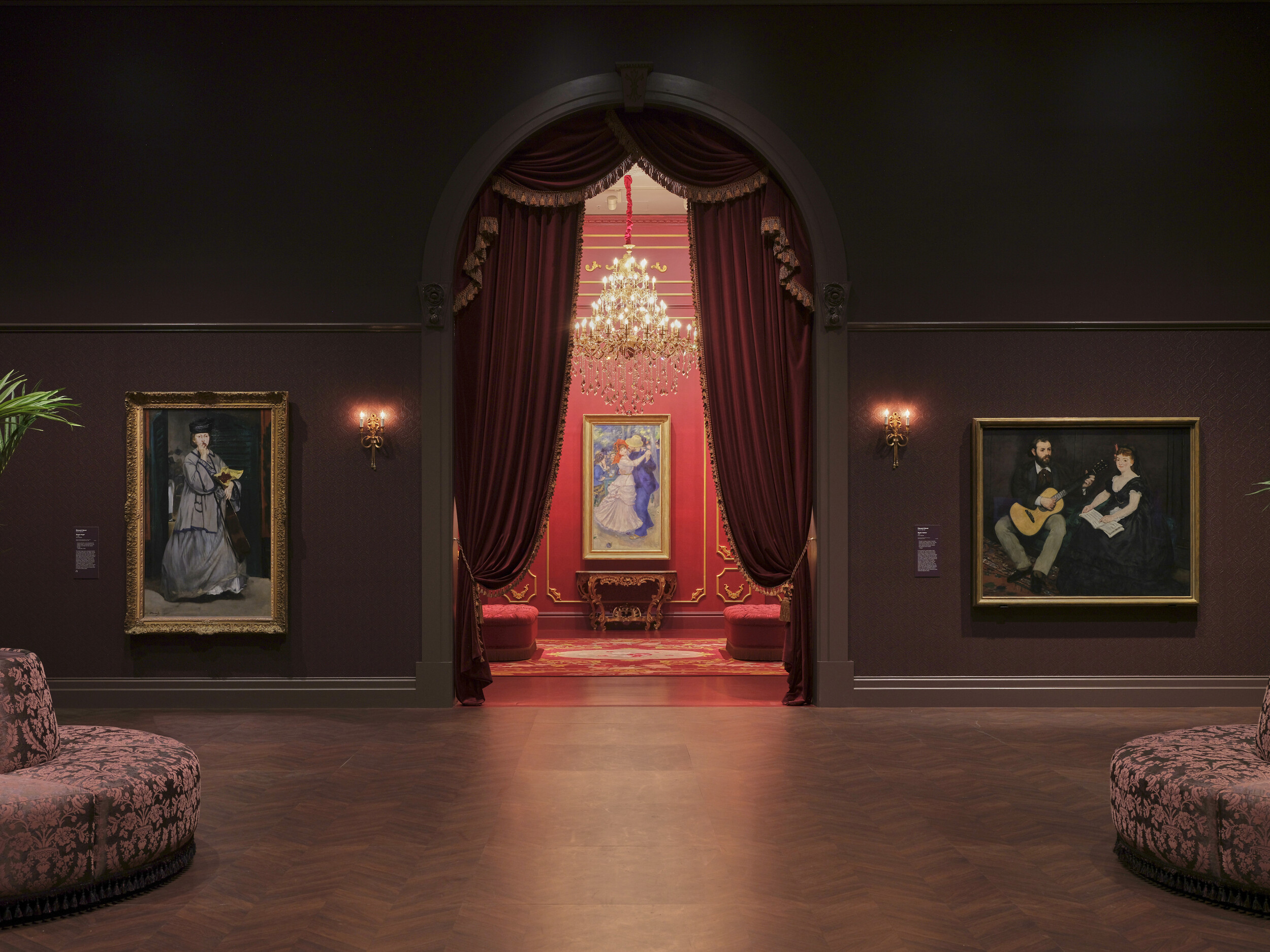
Installation view of French Impressionism from the Museum of Fine Arts, Boston on display from 6 June to 5 October, at NGV International, Melbourne. Photo: Sean Fennessy
Rather than a march through history, then, the exhibition offers a gently modulated rhythm of visual ideas, pivoting around a blockbuster “experience” of ambient historical immersion, fin-de-siècle moods, and ample photo ops.
Indeed, history is largely absent from the show, which does not attempt to account for the leap from our antique Aphrodite and Louis XVI Gluck overture to, in the final corridor as we exit the show, a modernist frieze of black-and-white photographic portraits: Monet, Renoir, Morisot, and all the other artists in the exhibition—with, yes, you guessed it, Claude Debussy gently twinkling overhead, ushering us out and into the gift shop.
It is hard to say what, if anything, the exhibition is suggesting by this transition. It is unclear whether it marks an historical rupture—the end of one world, in which the Salon (played by Aphrodite and Gluck) might represent a lingering ancien régime and Second Empire—and the beginning of another, shaped by mechanical reproduction, publicity, and the market. Or perhaps the distinction is less stark than it seems. After all, Impressionism’s appeal was inseparable from its photographic alter ego; reproduced in catalogues, the style was easily exported abroad, dodging the nineteenth-century’s tariff penchant.
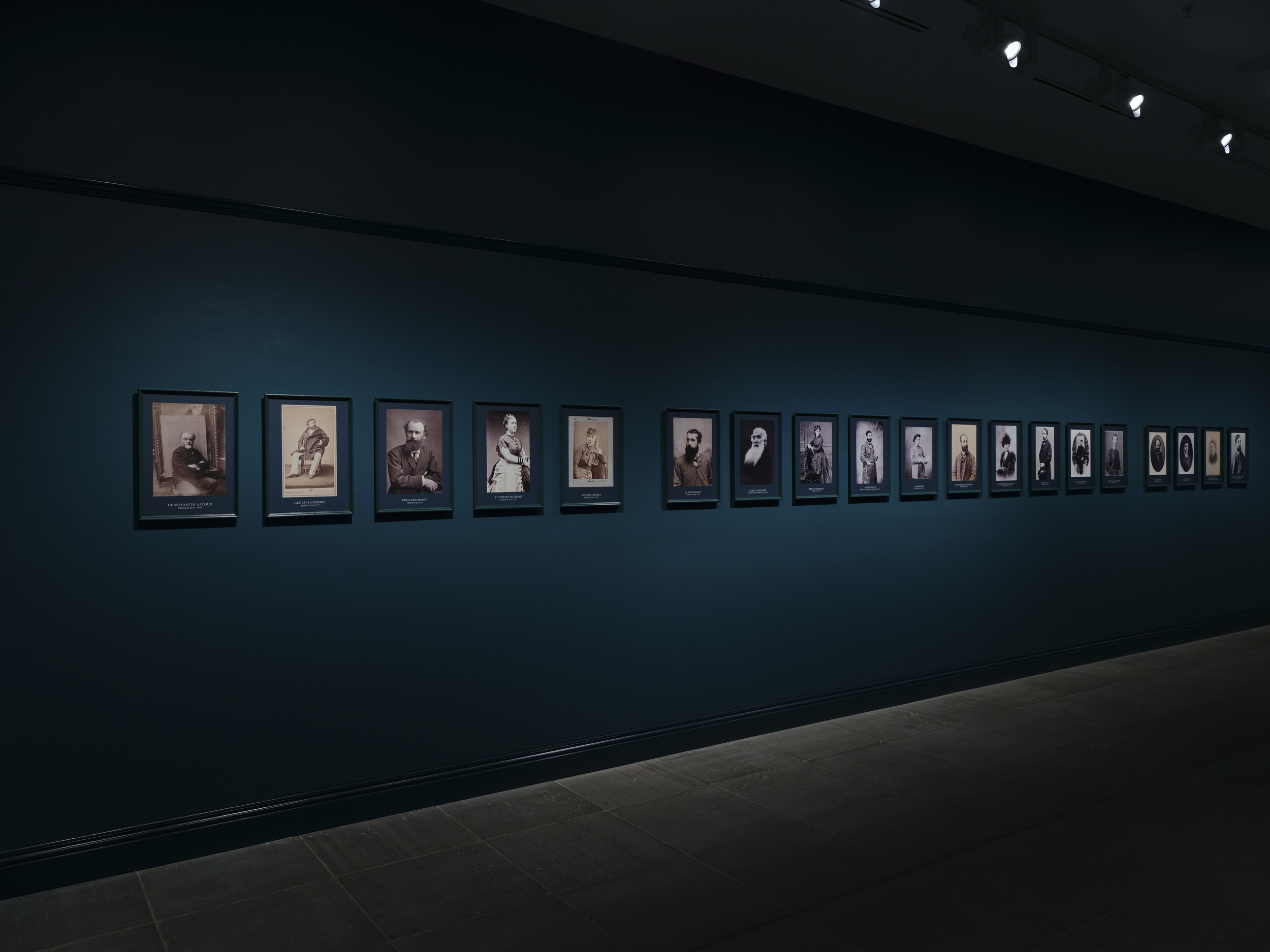
Installation view of French Impressionism from the Museum of Fine Arts, Boston on display from 6 June to 5 October, at NGV International, Melbourne. Photo: Sean Fennessy
An absence of history means no 1870 Franco-Prussian War and 1871 Paris Commune, during which government troops killed at least fifteen thousand Parisian Communards in what became known as the “bloody week.” These events, inaugurating the Third Empire, were surely a catalyst for Pissarro, who went into exile in London (Courbet and some others stayed), returned to France to find nearly all his earlier works destroyed, and soon after became central to establishing the Société Anonyme Coopérative des Artistes Peintres, Sculpteurs, Graveurs in 1873.
When history arrives, it appears rather as hints or flashes—impressions, if I may. Courbet’s Hollyhocks in a Copper Bowl, for instance, hangs in the studio room like a soft, flowery bruise. It was painted in 1872 while the artist was imprisoned for his role in the Paris Commune and the toppling of the Vendôme Column.
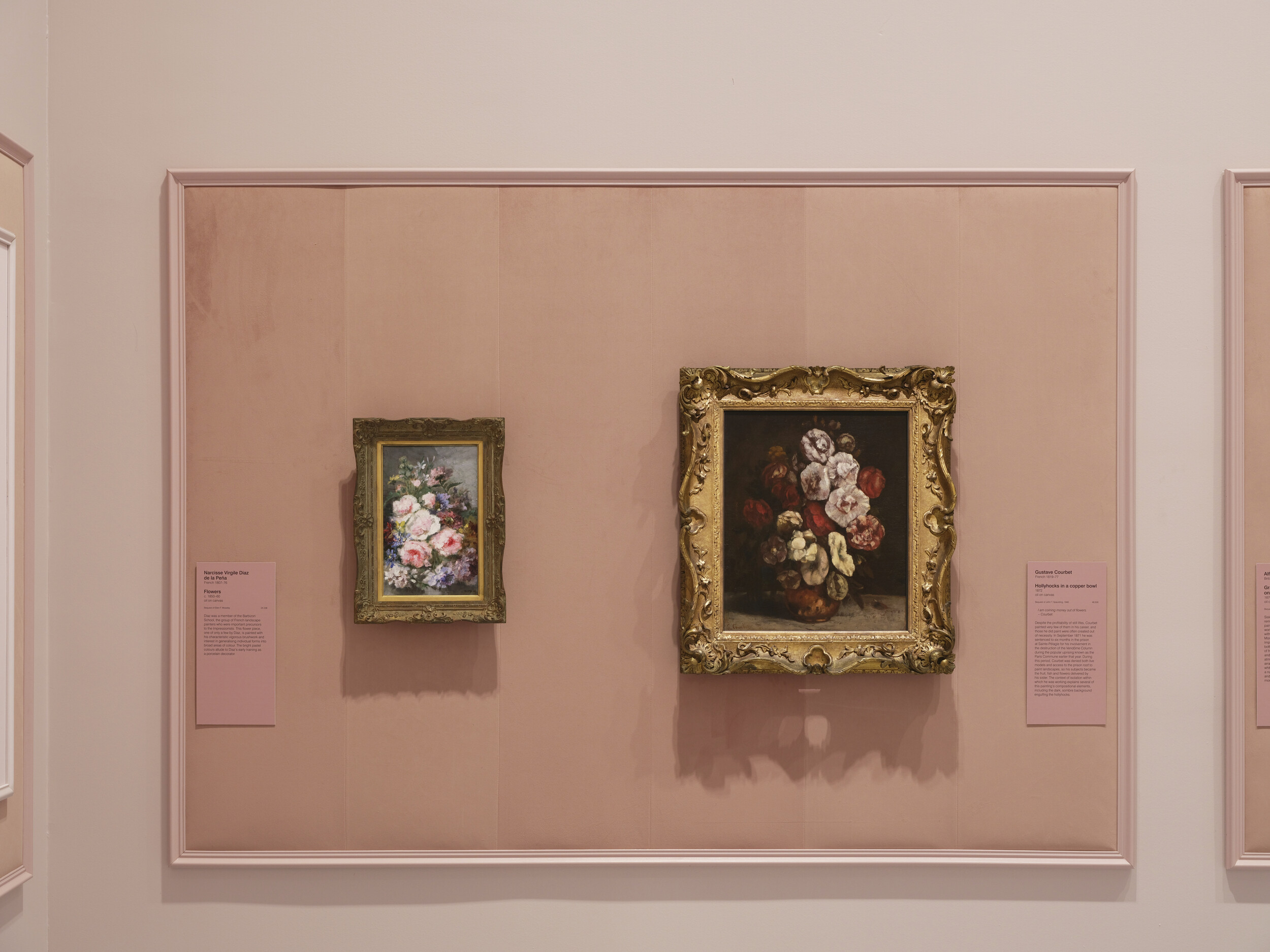
Installation view of French Impressionism from the Museum of Fine Arts, Boston on display from 6 June to 5 October, at NGV International, Melbourne. Photo: Sean Fennessy
The turmoil surrounding Impressionism has spurred countless interpretations of its aesthetic and historical significance. It has variously been described as a spiritual rebirth of painting after centuries of degeneration under academic convention; as a radical response to the spectacle of modern life in capitalist Paris; as a group of artists benefiting from a new art-market infrastructure called the “dealer–critic” system (said to oppose the state-run Salon system of official juries and honours); or as a product of strategic marketing through a powerful alliance of artists, dealers, critics, and institutions.
Where does French Impressionism land on these grand narratives? Seemingly somewhere in the orbit of Durand-Ruel himself. His strategic marketing, involving much touring of America, spread Impressionism’s gospel and materially reinforced the Barbizon-to-Impressionism narrative we see reflected in the show.
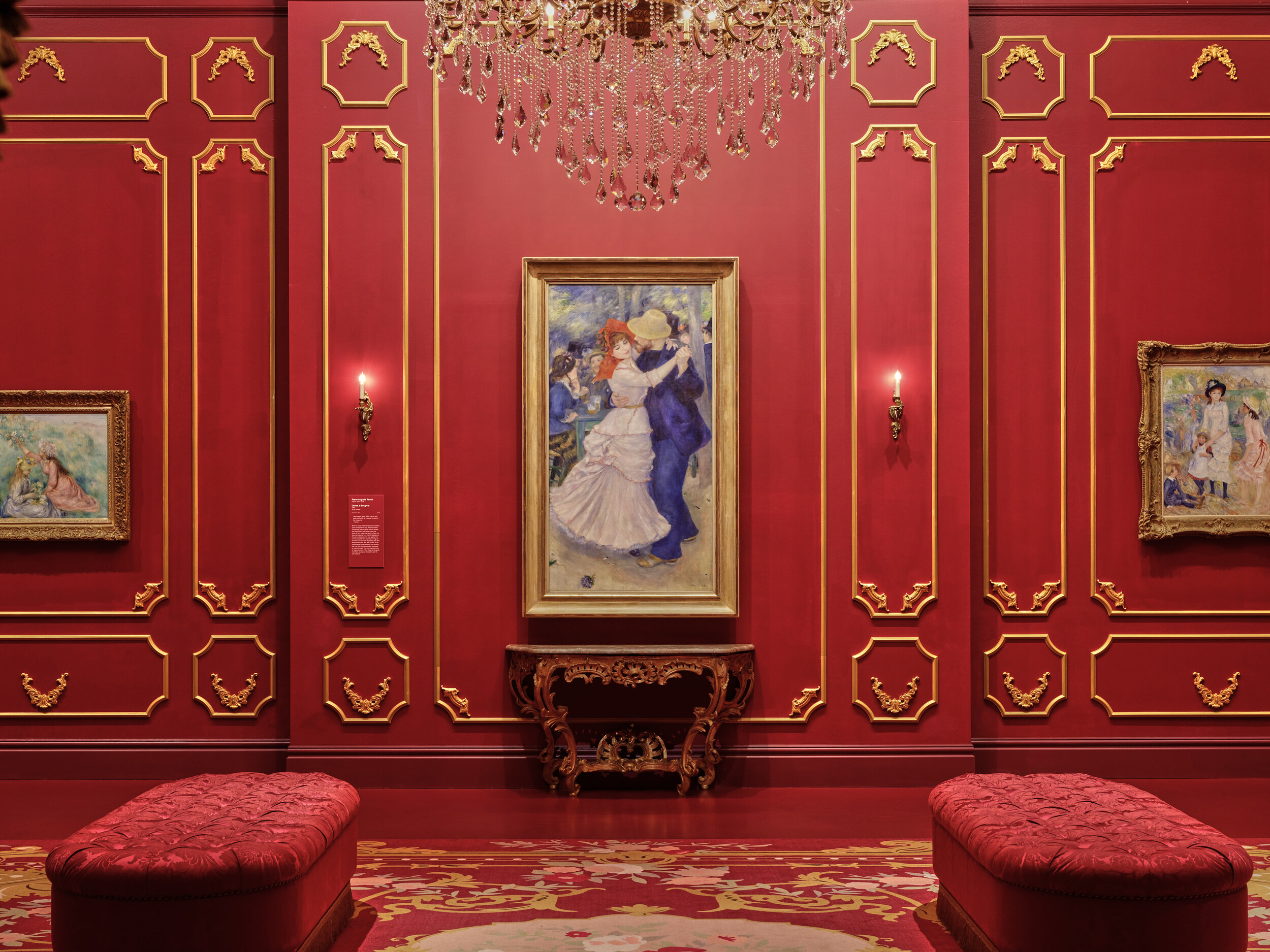
Installation view of French Impressionism from the Museum of Fine Arts, Boston on display from 6 June to 5 October, at NGV International, Melbourne. Photo: Sean Fennessy
Thus, like the NGV, the Boston collection is already marked by a provincialism, a second-order French Impressionist export acquisition. Only after America’s liberation of Paris in the Second World War did American art begin to assert itself. Even in Clement Greenberg’s “Avant-Garde and Kitsch,” written for the Trotskyite Partisan Review in 1939, American painting is explicitly positioned as a backwater that must look to the Masters of European art to source its elixir, which would come when the centre of the art world shifted from Paris to New York. And it is perhaps just this provincial attitude that is reflected doubly in French Impressionism at the NGV, where it returns as a boomerang effect.
This yet-another Impressionist blockbuster has reached a point where maximalism seems less excess than exhaustion. As one spins dizzily beneath Renoir’s dancers and sparkling chandeliers, one imagines oneself to be a celebrity VIP delirious at a late-night NGV Gala, with its haute couture, mirrored halls, and curated tablescapes, all almost indistinguishable from the scenographic rooms of the show. It is as if the NGV doesn’t just house the exhibition, but is it—a mise en abyme of narcissistic indulgence.
Perhaps our culture is more like the Impressionists’ than we’d care to admit, living through its own début de siècle gilded age. Rich. Decadent. Tired. Gripped by anxiety over the future of Western civilisation. Consumed by malaise for democracy. Flush with wealth ever more unevenly distributed. Obsessed with “experiences” and the ornate. I don’t know about you, but all this upbeat art only seems to encourage a deeper pessimism.

